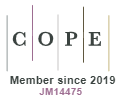Organization of the Research Process in the Context of Knowledge Organization Software and Research Project Management Software
DOI:
https://doi.org/10.18778/1733-8069.10.2.09Keywords:
CAQDAS, organization and knowledge management, bibliographical data management, research facilitating software, Grounded Theory MethodologyAbstract
The article introduces the reader to the area of computer programs that can contribute to work on a research project in each of its phases and on the organizational and substantive level. The aim of the article is not tthe comparison and presentation of all of the programs, but the presentation of individual representatives of programs that can be compiled into a single functional system. A system which facilitates such operations like project management, knowledge and bibliographic data organization, and analysis of empirical material with the use of CAQDAS (Computer Assisted Qualitative Data Analysis Software).
Downloads
References
A Guide to the Project Management Body of Knowledge (PMBOK guide) – Fifth Edition (2013) Newtown Square, PA: Project Management Institute [dostęp 13 maja 2013 r.]. Dostępny w Internecie http://www.projectauditors.com/Papers/PMBOK_FifthEdition.pdf
Google Scholar
Aronson Elliot, red., (2001) Człowiek istota społeczna. Przełożyła Lidia Grzesiuk. Warszawa: Wydawnictwo Naukowe PWN.
Google Scholar
Bazeley Patricia (2002) The Evolution of a Project Involving an Integrated Analysis of Structured Qualitative and Quantitative Data: From N3 to NVivo. „International Journal of Social Research Methodology”, vol. 5, no. 3, s. 229–243.
Google Scholar
DOI: https://doi.org/10.1080/13645570210146285
Bazeley Patricia (2012) Regulating Qualitative Coding Using QDAS? „Sociological Methodology”, vol. 42, no.1, s. 77–78.
Google Scholar
DOI: https://doi.org/10.1177/0081175012460852
Charmaz Kathy (2009) Teoria ugruntowana. Praktyczny przewodnik po analizie jakościowej. Przełożyła Barbara Komorowska. Warszawa: Wydawnictwo Naukowe PWN.
Google Scholar
Davidson Lorraine, Skinner Heather (2010) I Spy with My Little Eye: A Comparison of Manual versus Computer-aided Analysis of Data Gathered by Projective Techniques. „Qualitative Market Research: An International Journal”, vol. 13, no. 4, s. 441–459.
Google Scholar
DOI: https://doi.org/10.1108/13522751011078845
Di Gregorio Silvana (2000) Using NVivo for Your Literature Review [dostęp 18 października 2013 r.]. Dostępny w Internecie http://ww.sdgassociates.com/downloads/literature_review.pdf
Google Scholar
Evers Jeanine C. (2011) From the Past into the Future. How Technological Developments Change Our Ways of Data Collection, Transcription and Analysis. „Forum Qualitative Social Research”, vol. 12, no. 1 [dostęp 14 października 2013 r.]. Dostępny w Internecie http://www.qualitative-research.net/index.php/fqs/article/view/1636
Google Scholar
Glaser Barney G., Strauss Anselm L. (1999) The Discovery of Grounded Theory. Strategies for Qualitative Research. New Brunswick, NJ: Aldine Transaction.
Google Scholar
Głowacki Kamil (2011) Półmetek perspektywy 2007–2013. Jak wykorzystać pozostałe środki. Fundacja Studiów Europejskich – Instytut Europejski [dostęp 2 października 2013 r.]. Dostępny w Internecie http://WWW.ie-ries.com.pl/archiwum/artykuly/RIES_201110141304_Polmetek_II.pdf
Google Scholar
Hutchison Andrew John, Johnston Lynne Halley, Breckon Jeff David (2010) Using QSR‐NVivo to Facilitate the Development of a Grounded Theory Project: An Account of a Worked Example. „International Journal of Social Research Methodology”, vol. 13, no. 4, s. 283–302.
Google Scholar
DOI: https://doi.org/10.1080/13645570902996301
Kolasa Władysław Marek (2000) Kartka z dziejów komputeryzacji bibliotek polskich. „Bibliotekarz”, nr 3 s. 7–11.
Google Scholar
Konecki Krzysztof (2000) Studia z metodologii badań jakościowych. Teoria ugruntowana. Warszawa: Wydawnictwo Naukowe PWN.
Google Scholar
Konecki Krzysztof (2012) Wizualna teoria ugruntowana. Podstawowe zasady i procedury. „Przegląd Socjologii Jakościowej”, t. 8, nr 1, s. 12–45 [dostęp 09 października 2013 r.]. Dostępny w Internecie http://www.qualitativesociologyreview.org
Google Scholar
DOI: https://doi.org/10.18778/1733-8069.8.1.02
Kuhn Thomas S. (2001) Struktura rewolucji naukowych. Przełożyła Helena Ostromęcka. Warszawa: Fundacja Aletheia.
Google Scholar
Miller Piotr (2012) Wprowadzenie do obserwacji online: warianty i ograniczenia techniki badawczej. „Przegląd Socjologii Jakościowej”, t. 8, nr 1, s. 76–97 [dostęp 11 października 2013 r.]. Dostępny w Internecie http://przegladsocjologiijakosciowej.org
Google Scholar
DOI: https://doi.org/10.18778/1733-8069.8.1.05
Niedbalski Jakub (2013) Odkrywanie CAQDAS. Wybrane bezpłatne programy komputerowe wspomagające analizę danych jakościowych. Łódź: Wydawnictwo Uniwersytetu Łódzkiego.
Google Scholar
DOI: https://doi.org/10.18778/7525-881-3
Niedbalski Jakub, Ślęzak Izabela (2012) Analiza danych jakościowych przy użyciu programu NVivo a zastosowanie procedur metodologii teorii ugruntowanej. „Przegląd Socjologii Jakościowej”, t. 8, nr 1, s. 126–165 [dostęp 11 października 2013 r.]. Dostępny w Internecie http://przegladsocjologiijakosciowej.org
Google Scholar
DOI: https://doi.org/10.18778/1733-8069.8.1.07
Parfieniuk Marek (2012) Zarządzanie danymi bibliograficznymi za pomocą narzędzi informatycznych [w:] Bazyl Poskrobki, red., Metody badań naukowych z przykładami ich zastosowania. Białystok: Wydawnictwo Ekonomia i Środowisko, s. 217–237 [dostęp 20 października 2013 r.]. Dostępny w Internecie http://www.bir-gow.pl/index.php?option=com_remository&Itemid=13&func=startdown&id=103
Google Scholar
Practice Standard for Work Breakdown Structures. Second Edition (2006) Newtown Square, PA: Project Management Institute [dostęp 5 maja 2013 r.]. Dostępny w Internecie http://haanagroup.ir/file/262f6c76cfd3353ea116233443052880e0fcfe5f.pdf
Google Scholar
Schönfelder Walter (2011) CAQDAS and Qualitative Syllogism logic—NVivo 8 and MAXQDA 10 Compared. „Forum Qualitative Social Research”, vol. 12, no. 1 [dostęp 21 października 2013 r.]. Dostępny w Internecie http://WWW.qualitative-research.net/index.php/fqs/article/viewArticle/1514
Google Scholar
Schwalbe Kathy (2011) Information Technology Project Management. Boston, MA: Course Technology.
Google Scholar
Silverman David (2009) Prowadzenie badań jakościowych. Przełożyły Małgorzata Głowacka-Grajper, Joanna Ostrowska. Warszawa: Wydawnictwo Naukowe PWN.
Google Scholar
Smyth Robyn (2008) Exploring Congruence between Habermasian Philosophy, Mixed-method Research, and Managing Data Using NVivo. „International Journal of Qualitative Methods”, vol. 5, no. 2, s. 131–145 [dostęp 20 października 2013 r.]. Dostępny w Internecie http://wigan-ojs.library.ualberta.ca/index.php/IJQM/article/view/4395
Google Scholar
DOI: https://doi.org/10.1177/160940690600500204
Wilk Katarzyna M. (2001) Komputerowe wspomaganie jakościowej analizy danych. „ASK. Research & Methods”, nr 10, s. 49–63.
Google Scholar
Downloads
Published
How to Cite
Issue
Section
License

This work is licensed under a Creative Commons Attribution-NonCommercial-NoDerivatives 4.0 International License.














